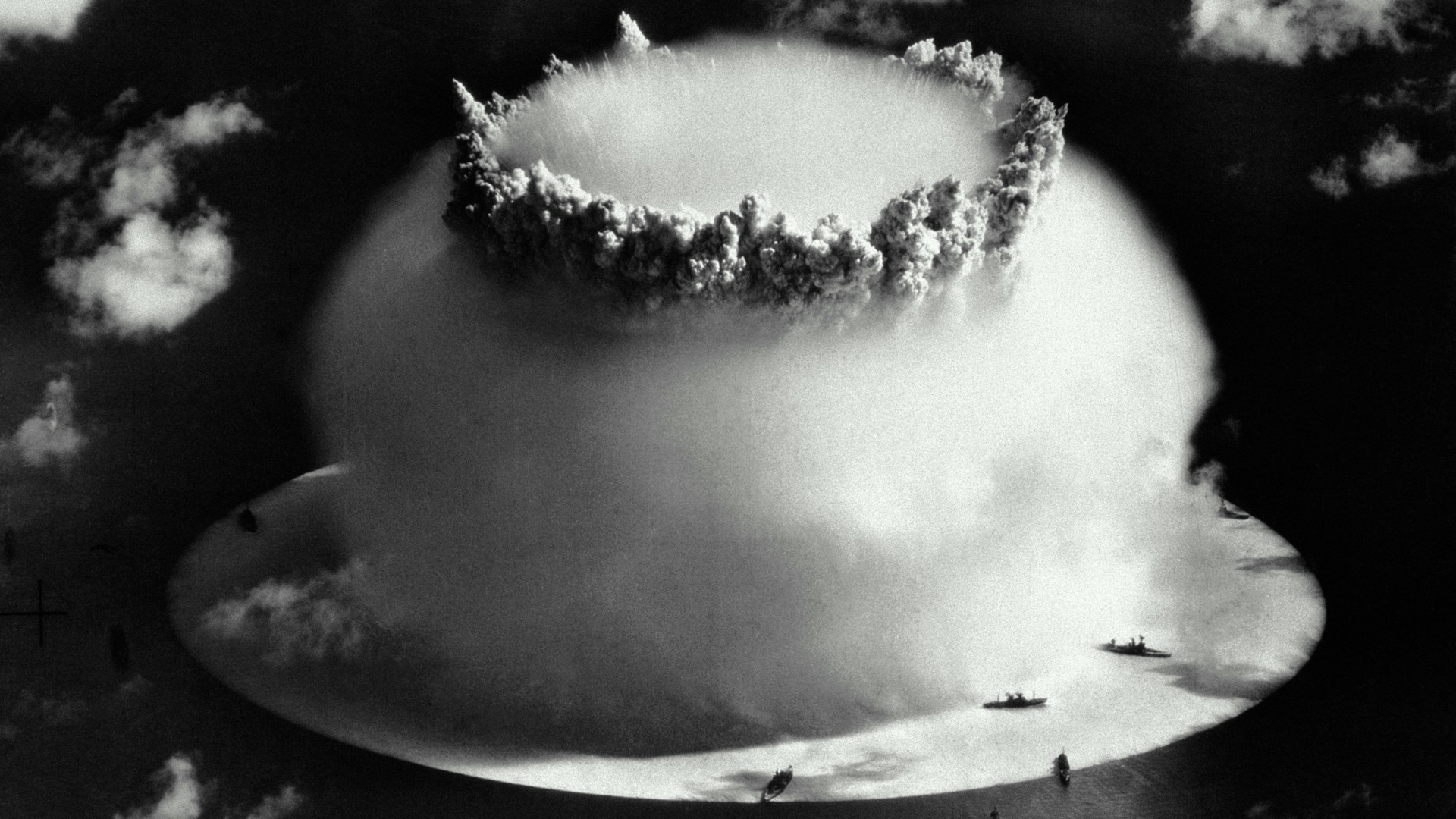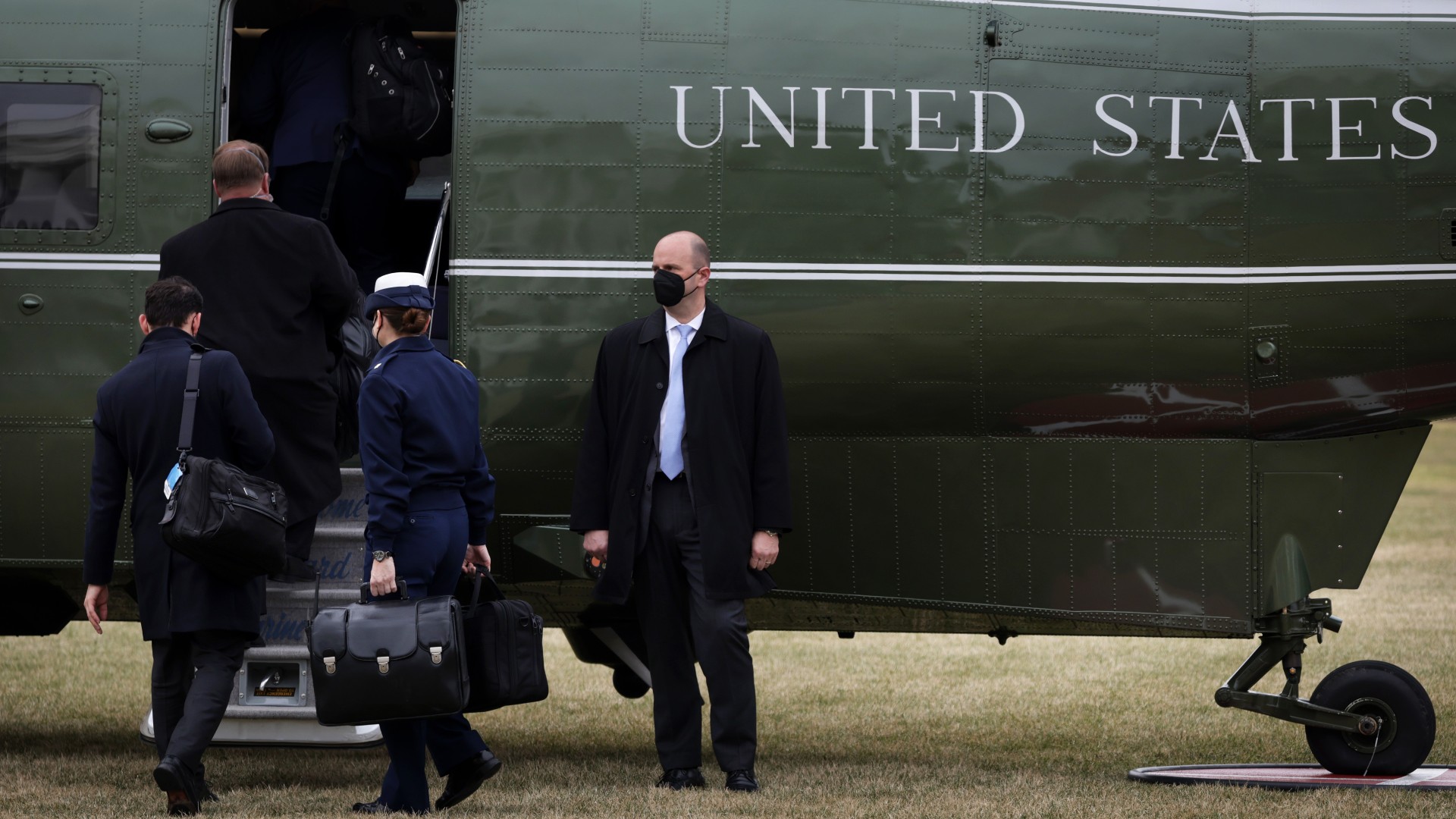What stops nuclear weapons from accidentally detonating?
[ad_1]
Nuclear weapons can kill millions of people, wipe out entire cities and render soil in the fallout zone infertile for generations.
According to the Arms Control Association (opens in new tab), the world’s nine nuclear states — China, France, India, Israel, North Korea, Pakistan, Russia, the United Kingdom and the United States — have a combined arsenal of around 13,000 nuclear warheads. This raises some obvious questions. For example, what are the chances of an accidental denotation? And what measures are in place to ensure they don’t inadvertently detonate?
Whereas some early nuclear weapons were fragile or volatile, modern nuclear weapons are carefully designed with high levels of safety, security and reliability, said Philipp C. Bleek (opens in new tab), an associate professor of nonproliferation and terrorism studies at the Middlebury Institute of International Studies at Monterey in California.
That means accidental denotation is extremely unlikely. “In its normal [stored] environment, a U.S. nuclear weapon is not supposed to exceed a one in a billion chance of prematurely detonating,” Bleek told Live Science in an email. “In an abnormal environment, it’s one in a million.” An abnormal environment, according to Bleek, can include situations such as a “fire in the location where a nuclear weapon is stored, or a crash of an aircraft that is transporting a nuclear weapon.” Both of these examples, Bleek noted, have occurred in the past, and the nuclear weapons did not detonate.
“Weapons are designed to be ‘one-point safe,'” Bleek added, so if a single explosive component of a weapon is accidentally detonated, the probability of a nuclear yield greater than four kilotons should not exceed one in a million. As a point of comparison, the bomb dropped on Hiroshima was 15 kilotons (opens in new tab).
To ensure that nuclear bombs only have a one in a billion (or million) chance of detonating following any kind of accident or incident, the U.S. Department of Energy (opens in new tab) mandates that these weapons “include multiple sets of strong links, weak links, and barriers nested within one another, with each safety subsystem largely independent of the others.”
This directive ensures that the weapon’s different subsystems are sufficiently independent. Utilizing two of these safety subsystems will achieve a system assurance of one in one million, while three will provide one in one billion. Safety from accidental detonation, according to the U.S. Department of Energy, “is only possible if the failure modes for each safety subsystem are truly independent from each other.”
Death and destruction

To date, only two atomic bombs have been dropped with the sole intention of causing widespread death and destruction: the U.S. bombings of the Japanese cities Hiroshima and Nagasaki on Aug. 6 and 9, 1945, respectively, which killed an estimated 214,000 people (opens in new tab), and caused serious injury and illness to hundreds of thousands of others.
In the 80 years since, our understanding of how nuclear weapons operate has enhanced, to the point where today’s weapons are far more powerful and potentially destructive. The B83, the most powerful bomb in the United States’ nuclear collection, has a maximum yield of 1.2 megatons, making it 60 times more powerful than the bomb dropped on Nagasaki. The Nuclear Weapon Archive (opens in new tab) suggests that 650 of these are currently in active service in the U.S.
Related: The 9 most powerful nuclear weapon explosions
Given what’s at stake, what protocols are in place to prevent death and destruction?
Some of the most important safety measures include carefully monitoring components, and replacing outdated or redundant modules or parts in a timely manner.
“Nuclear weapons have limited lifespan components, in particular the so-called boost gas that provides fusion fuel,” Bleek said. Fusion occurs when two light atoms bond together, or fuse, to make a heavier one. However, when the radioactive material present in nuclear weapons decays, it has to be replenished in order.
For example, tritium, a radioactive isotope of hydrogen, has a half life of only 12.33 years, Bleek said, meaning half of the quantity decays in that time frame. This means that a close eye needs to be kept on weapons containing tritium.
Other components also have limited service lives, so weapons need to be remanufactured occasionally. “The longest-lived component of a nuclear weapon is the plutonium pit, which may have a usable life exceeding a hundred years,” Bleek said. These pits are key central elements in nuclear warheads. They are spherical shells of plutonium that are generally the size of a soccer ball. When a nuclear weapon is detonated, the plutonium triggers a small nuclear reaction. This, in turn, creates a more substantial secondary explosion in the main nuclear payload. Simply put, the pit holds the material that enables a nuclear weapon to become a bomb.
Use controls

“Modern nuclear weapons have so-called use controls, which prevent their undesired detonation,” Bleek said. “For example, a missile warhead needs to experience certain conditions before it arms itself, so that it cannot — or at least is extremely unlikely to — detonate in its silo or aboard its submarine.”
In addition, modern nuclear weapons have been carefully designed to ensure that, when they are inactive, the materials that need to combine to create a nuclear explosion are kept apart. As many as six safety devices are used in a nuclear weapon to ensure that an inadvertent detonation doesn’t occur. Some of these safety devices, such as inertial switches (that trigger in the event of shock or vibration) or accelerometers (that measure the vibration or acceleration of a structure’s motion) will allow arming to take place only if they are subjected to a very specific degree of acceleration or vibration over a specific time period.
Meanwhile, the nuclear material itself also has a safeguard. “Nuclear weapons contain a certain amount of highly enriched uranium or plutonium — if you have enough of this material in a small enough volume (a so-called “critical mass”) it will automatically explode in a nuclear reaction,” Mark Bell (opens in new tab), an associate professor of political science at the University of Minnesota, told Live Science in an email.
For a nuclear weapon to detonate, Bell said, deliberate action must be taken to bring the material together. Typically, this is done in one of two ways. One way, used in so-called gun-type devices, is to “fire one chunk of highly enriched uranium into another chunk of highly enriched uranium” so the two chunks together make up a “critical mass” and trigger an explosion, he said. This is the simplest type of nuclear weapon and the type of bomb that the U.S. used in Hiroshima during World War II.
“The alternative, which is more complicated but lets you create a bigger explosion, is to take a hollow sphere of plutonium and crush it into a ball to make a critical mass which then explodes,” Bell said. “But, because the material isn’t a critical mass when the weapon is just sitting around, there isn’t much danger of it just spontaneously going off.” This type of denotation, called an implosion device, was what the U.S. used on Nagasaki.
The person making the call
While it is essential to establish measures to ensure a nuclear weapon does not detonate of its own accord, other considerations require a greater investment of time and contemplation.
“It is more to prevent unauthorized use, theft, etc than it is to prevent them just detonating out of the blue,” Bell said.
“It would be hard for an average person to detonate a nuclear weapon if they stumbled across it,” Bell added. “In the United States, for example, there are devices called Permissive Action Links (PAL) built into nuclear weapons which make it very hard for anyone to arm or set off a nuclear weapon without the appropriate authority or codes.”
However, both Bell and Bleek pointed out that certain people wield far more nuclear power than others, and the ability to fire weapons on a whim, as opposed to any sort of accidental detonation, is far more likely to be the cause of any future bomb-related disaster.
“Accidental or unauthorized nuclear use is far less likely in my view than deliberate but rash use,” Bell said. “There are basically no checks and balances to prevent the U.S. president, for example, from ordering the launch of nuclear weapons. In fact, the entire system is essentially set up to ensure they can do so (opens in new tab). This is what keeps me up at night to a far greater extent than worries about accidents or nuclear weapons exploding spontaneously.”
[ad_2]
Source link


